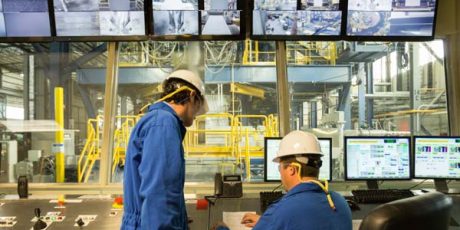
IOT- Factory of the Future
Manufacturers in today’s economy, find themselves facing a whole new set of challenges. Regardless of size, manufacturers are feeling the pressure of increased regulatory demands and the effects of a more complex value chain that extends to global suppliers, customers, and colleagues. To further complicate matters, customer requirements are evolving more quickly, and increased outsourcing has fragmented the value chain, making it more difficult to respond quickly. To successfully address these complexities, one needs solutions that connect all the parts of the value chain, enabling one to quickly and easily share information throughout their businesses with every department, employee, partner, and customer.
Connectivity that provides complete data visibility from product development through sales and service is crucial to making manufacturing companies more responsive and competitive. This level of connectivity extends access, visibility, and knowledge across the value chain. It makes it easier to collaborate across globally distributed teams, and it allows to securely integrate information and knowledge throughout business workflows. Going digital will allow plants and factories to quickly exchange large quantities of data, and gain valuable and actionable insights from it. All of which will mean collaboration and communication across the value chain at a faster, better and more efficient level, as well as harnessing expertise to automate and improve processes.
Interconnected machines and parts can literally “speak” to one another, and identify issues that could arise, so that predictive maintenance and action to be taken before the part or machine actually breaks down and human intervention is needed. When a machine can communicate with the manufacturer, production flaws or weak links can be observed, reported, and dealt with, long before the product leaves the shop floor and is installed at a customer location. For connected equipment that is placed outside the floor and is reporting and acting from a remote location, the ability to diagnose and repair a fault before it causes damage or becomes critical, is a huge win.
Connected Manufacturing helps you respond more quickly and effectively to business needs by targeting every aspect of the manufacturing value chain: research and development, supply chain, production, and sales and service. There are distinct advantages for different teams. From an operations standpoint, business processes can be integrated and automated using data. R&D and product design teams will be able to interact and exchange information with the plant floor, for a high level of quality control. Product quality will be positively affected too, by the use of sensors and digital tags, especially for those products in the field. For IT security teams, security of data exchange is assured by making use of cloud based platforms. And for operations teams, they have the ability to not just automate data flow, but also make use of this information to ensure less downtime and speed up their operations as well as improve operating equipment efficiency (OEE).
IoT is pushing everything to the edge. In today’s current phase of digital transformation, it’s up to us to leverage the convenience of automation and rapid communication of actionable insights. These insights are powered by IoT and cloud-based technologies, and combined with our human judgment to determine the right approach to customers, audiences, and geo-targeting, we have a winning formula.
IoT makes digital transformation reality in factories, transportation, & utilities. The IoT journey for an enterprise begins with connecting their sensors and actuators to a smart router which streams the data to a sensor data aggregation system. To reap benefits at an early stage, data is pre-processed at local site before making it to the Cloud for analytics and dashboard management.
The onus of this new initiatives & change has shifted from the traditional IT to the business who would be the primary consumers of insights that IoT will construct over time. This will bring a paradigm shift in the manufacturing space by inducting Predictive Manufacturing Systems (PMS).
Tags:


